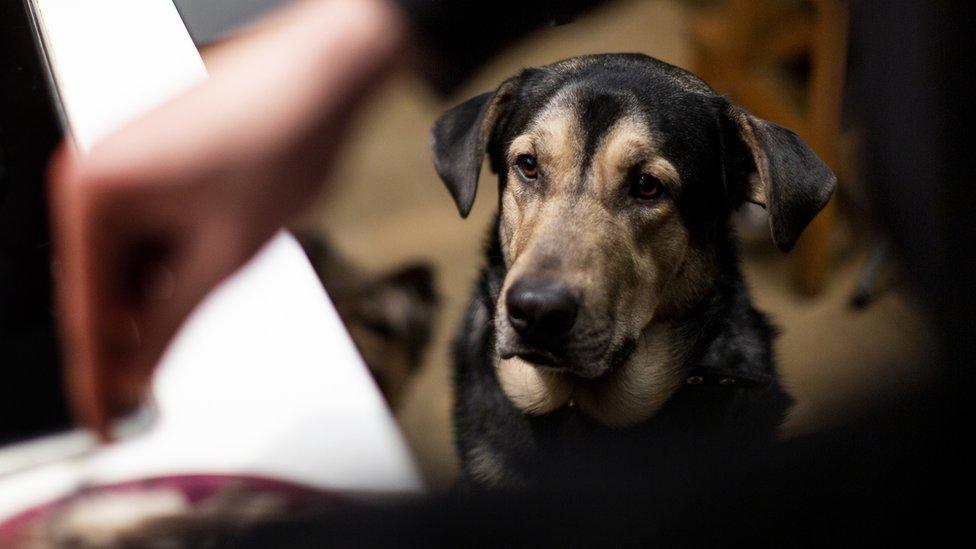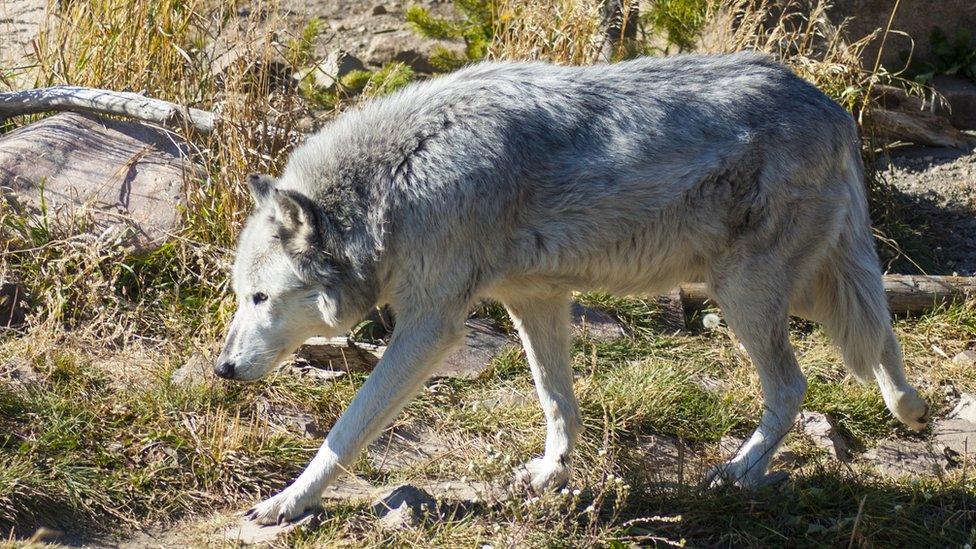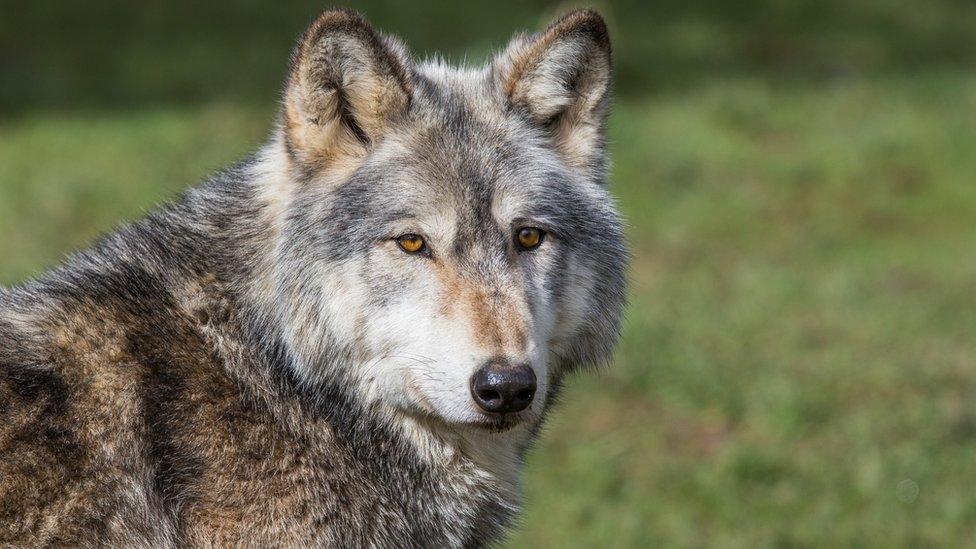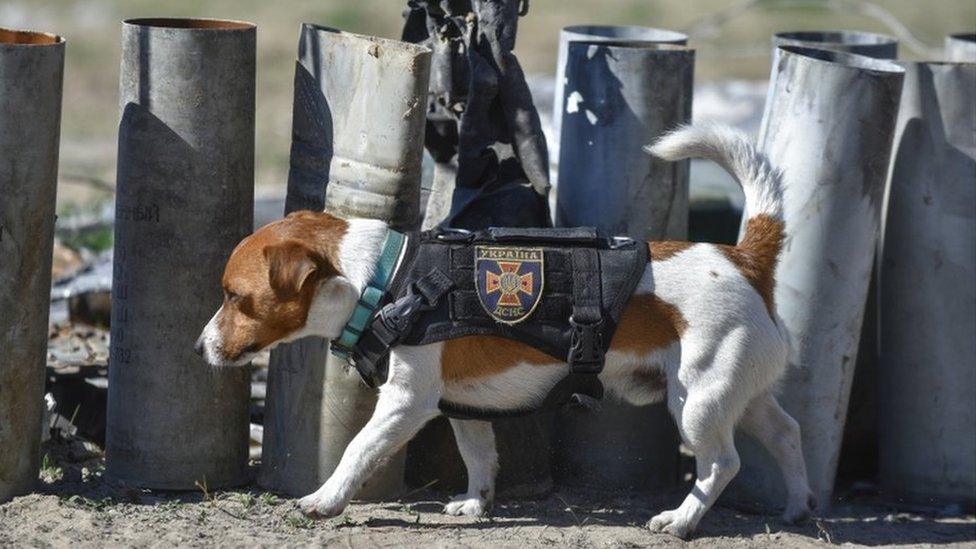Clever dogs can tell where their food has been hidden
- Published
- comments

Wolves and dogs don't just rely only on their strong sense of smell when searching for a meal - they use their memory too.
That's according to a new study that shows both animals are better able to find food when they have been able to see where their treats are hidden.
It supports decades of research, which showed that dogs use social cues from humans to find food.
Previous studies into wolves showed wolves that were intensely socialized with humans, could read people's behaviour in a similar way to dogs.
This can help us understand the way wolves and dogs operate, and can help reshape how we train and interact with these animals in a wide variety of settings - from household pets to conservation efforts.

How was the research carried out?
Three separate experiments were carried out between 2009 to 2014 at the Wolf Science Centre in Ernsbrunn, Austria.
The researchers watched nine wolves and eight dogs as they searched for food hidden by humans in a testing enclosure.
One group of animals were able to watch as food was hidden in more than 130 possible locations, and were then set free to retrieve their rewards.
Animals in another group were not able to see where the food was hidden and had to rely on scent alone.
The animals that watched the hiding process moved faster, travelled shorter distances before finding it, and also found more of the food.
Senior author of the study, Friederike Range, who is an associate professor at the University of Veterinary Medicine in Vienna, said it was an important breakthrough.
"Sense of smell is very important, but it costs a lot of energy to use the nose - at least, that's what we see with our animals", Range said.
"It seems in most situations, if they have a visual cue, they will use a visual cue first."

Wolves were able to find the food quicker than the dogs in the experiment
Experts say the fact dogs followed the behaviour of the humans wasn't all that surprising.
Liz Stelow, from the University of California-Davis School of Veterinary Medicine, who was not involved in the study, said: "In dogs, we've counted on them watching our behaviours. It's part of how they were domesticated.
"They watch our behaviours very intensely, and they also are often motivated by food. So if our behaviours have something to do with food, I think they do pay special attention."
However, experts were more surprised at how much the wolves responded in a similar way to the dogs.
Katherine Houpt, from the Cornell University College of Veterinary Medicine, said: "What would be important to discover next is whether this is something the animals learnt to do or whether it was part of their DNA."

To do this, the study would need to be carried out on wild wolves, as the wolves in the study were raised by humans - making them more likely to follow human gestures than those that live in the wild.
A further study would also need to be carried out in an environment more similar to where wild wolves normally live, rather than a testing enclosure.
The testing enclosure was similar to the environment domesticated dogs are accustomed to, but wolves in the wild have to hunt - not simply find - food.
Liz Stelow said: "I think the study probably says more about dogs, overall, than it does about wolves."
Can your dog find hidden snacks? Let us know in the comments...
- Published10 May 2022

